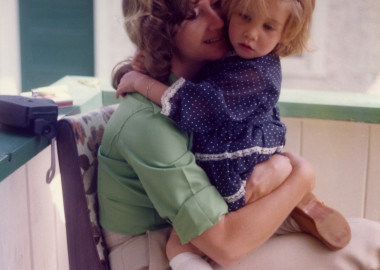In business, things go wrong. Crises emerge. Mistakes are made. These moments of difficulty define brands. When an organization is up against the wall consumers find out what that company is made of. Some aren’t up to the challenge and go away quietly. Others take a hard look at their faults, apologize, reinvent, and try become something better on the other side. Here are six examples of brands that rebounded from a crisis.

1. Johnson & Johnson – Chicago Tylenol Murders (1982)
In 1982, seven people were killed when an unknown party tampered with Extra-Strength Tylenol packages, lacing the capsules with cyanide. This tragic series of events had little to do with the company that owned the product (Johnson & Johnson), but they took control of the situation by recalling all Tylenol products in the market (estimated at 31 million bottles). This decision, unusual at the time, helped put consumer’s fears to rest about the safety of the products (and the integrity of the brand). The company’s leadership purchased national media to advertise warnings about the products, and offered to exchange all previously purchased tablets. Beyond the immediate damage control, Johnson & Johnson developed tamper-resistant packaging and helped set industry standards that are followed to this day.

2. Nike – Serious Sweatshop Protests (1990s)
The iconic swoosh brand faced a crisis in the early 1990s. Harper’s magazine published an article detailing conditions in an Indonesian factory where workers made less than minimum wage (the Harper’s story linked here, behind a paywall). On the heels of that article, the 1992 Barcelona Olympics became a platform for a global campaign to boycott the apparel giant. Nike responded by creating a department tasked with improving the lives of factory workers. Over the next few years, the company (and its famous spokespeople like Michael Jordan) continued to come under fire for these practices. The ultimate response came in 1998 when CEO Phil Knight made a public speech about the brand and its reputation.
“The Nike product has become synonymous with slave wages, forced overtime, and arbitrary abuse,” Knight said. “I truly believe the American consumer doesn’t want to buy products made under abusive conditions.”
As promised in the speech, in the following year Nike created the Fair Labour Association, a non-profit group dedicated to improving the lives of workers around the world. Nike’s steady profits and domination in the sports apparel market in the two decades since are a testament to the company’s response to this crisis.

3. JetBlue – 1,000 Cancelled Flights in Five Days (2007)
In February of 2007, a massive ice storm on the eastern coast of the U.S. crippled many airlines, and JetBlue had a particularly rough go. They were forced to cancel over 1,000 flights, and operational issues meant that some customers had to wait on planes for 11 hours before they were able to return to the terminal. The CEO of JetBlue, David Neeleman, wrote a letter of apology to the customers (printed in newspapers in major centres) affected by the delays, and the company created a Customer Bill of Rights to address these concerns (a standard many airlines have still not adopted).

4. Apple – iPhone 4 Has a Major Glitch (2011)
Apple is a company that has come back from the brink of disaster a few times. It’s part of the ubiquitous brand’s origin story, after all. In 2011, they had a firm hold on the smartphone market they helped create but were facing increasing pressure from Samsung and other Android competitors. Their latest product launch, the much-anticipated iPhone 4, sold well out of the gate, but consumers soon noticed a problem with the antenna and reception. (This is back when phones were used as phones.) In a defining moment for the brand, CEO Steve Jobs took to the black turtleneck to address the problem and offer a free case that fixed the issue. He thereby changed the story from company-in-crisis to ‘responsive brand well in control.’
Again and again, Apple’s crisis management practices have focused on solving the problem, clearly communicating the solution, and being open and transparent with consumers. A company as large and influential as Apple has the ability to control the narrative of their crisis. Here’s an interesting take on the crisis from Harvard Business Review that shows how Apple broke all of the PR rules at the time.
5. Chipotle Mexican Grill – Repeated Food Safety Violations (2015)
Chipotle has been a powerhouse in the fast-casual dining space since the mid-2000s. They made a name for themselves by delivering a “fresh” alternative to fast food at a time when consumer consciousness was shifting in that very direction. As the chain grew larger and more omnipresent (particularly in the U.S.), they faced a series of problematic food safety breaches. In 2015, their restaurants were responsible for several E. coli, norovirus, and Salmonella outbreaks across the country. The company responded by closing down all locations for an all-staff meeting on food safety. Founder and co-CEO Steve Ellis ran full page ads in the Boston Globe and Boston Herald reassuring the public about his commitment to ending the problem. As of this writing, Chipotle’s stock is on the rise again, although not to its pre-scandal levels. The public’s trust in the company seems to be returning, if slowly.

6. Amazon – 2015 Work Culture Exposé (2015)
The New York Times released a fairly damning portrait of Amazon HQ in 2015. This extensive piece painted a picture of a culture that encouraged overwork, fostered bitter competition between employees, and produced a high turnover rate. Amazon’s employer brand tanked. As in many of these examples, the leadership response was strong. Famed CEO and Founder Jeff Bezos responded to the criticism via a “leaked” memo to employees in which he apologized (sort of), and unequivocally stated that the version of the company presented in the exposé wasn’t one he recognized or endorsed, thereby rejecting that narrative, and beginning the process of reclaiming the brand story he wanted to author. In the months and years since, Bezos has doubled down on the Leadership Principles every Amazonian needs to internalize. Whether you agree with his leadership style or not, you can’t deny the success of his company and their brand.






